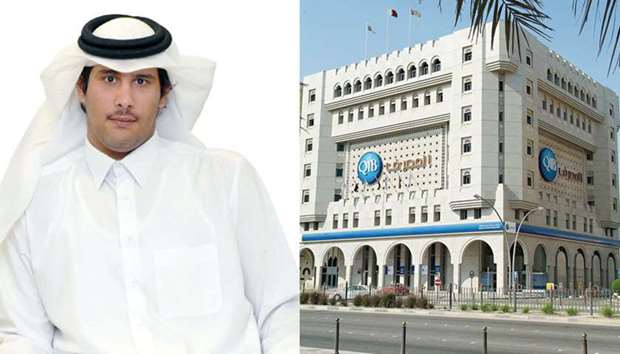Qatar Islamic Bank has achieved net profit of QR2.41bn for the fiscal year 2017, showing an increase of 12% year-on-year.
The lender has suggested 50% cash dividend, which will have to be approved by the Qatar Central Bank and general assembly of shareholders.
Total assets soared 7.5% to QR150bn, driven by a robust growth in financing and investments portfolio. Financing expanded 4.5% to QR102.6bn and investments by 52% to QR30.4bn.
With customer deposits registering a 6.7% growth to QR101.8bn, the bank’s financing-to-deposit ratio showed improvement.
“These positive financial results are achieved through the successful implementation of our business strategy and our effective risk management framework. The results confirm the bank’s strong financial position and reflect the firmness and stability of the Qatari banking sector and the country’s economy,” QIB chairman Sheikh Jassim bin Hamad bin Jassim bin Jaber al-Thani said.
During the last few years, QIB managed to increase significantly its market share to become the second largest bank in the country, with approximately 12% share of total banking assets, he added.
The lender’s total income for the year ended 31 December 2017 was QR6.2bn, registering a 13% yearly growth. Income from financing and investments grew 15% to QR5.46bn, reflecting a healthy accretion in core operating activities.
Total expenses stood marginally higher at QR1.11bn in 2017 as strict cost controls supporting higher operating revenues enabled further enhancement of efficiency, bringing down the cost-to-income ratio to 26.6% for 2017 against 29.8% a year ago.
QIB was able to manage the ratio of non-performing financing assets to total financing assets at 1.2%, one of the lowest in the industry, reflecting the quality of its financing assets portfolio and effective risk management framework.
QIB continues to pursue the conservative impairment policy with the coverage ratio for non-performing financing assets reaching 107% at the end of December 2017.
Total shareholders’ equity reached QR15.3bn, registering an increase of 7.4% year-on-year. As of December 2017, capital adequacy ratio stood at 17.3%, which is higher than the regulatory minimum requirements prescribed by the QCB and the Basel Committee.
In May 2017, global credit rating agency Moody’s for the first time assigned long-term deposit rating to QIB at ‘A1”. In August, Fitch assigned QIB a long-term issued default rating at ‘A’, while Capital Intelligence had in April 2017 reaffirmed the lender’s financial strength rating of ‘A’.

QIB’s u201cpositive financial results are achieved through the successful implementation of our business strategy and our effective risk management framework,u201d says its chairman Sheikh Jassim bin Hamad bin Jassim bin Jaber al-Thani (left). The lender has suggested 50% cash dividend.
